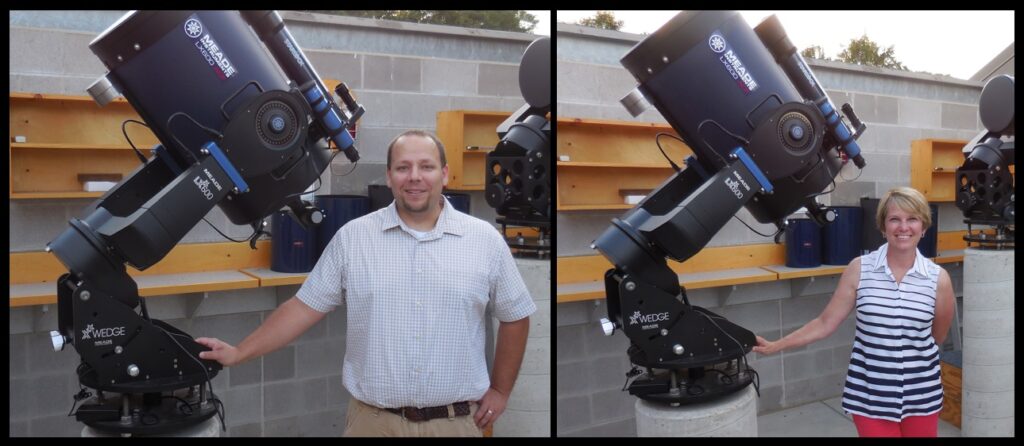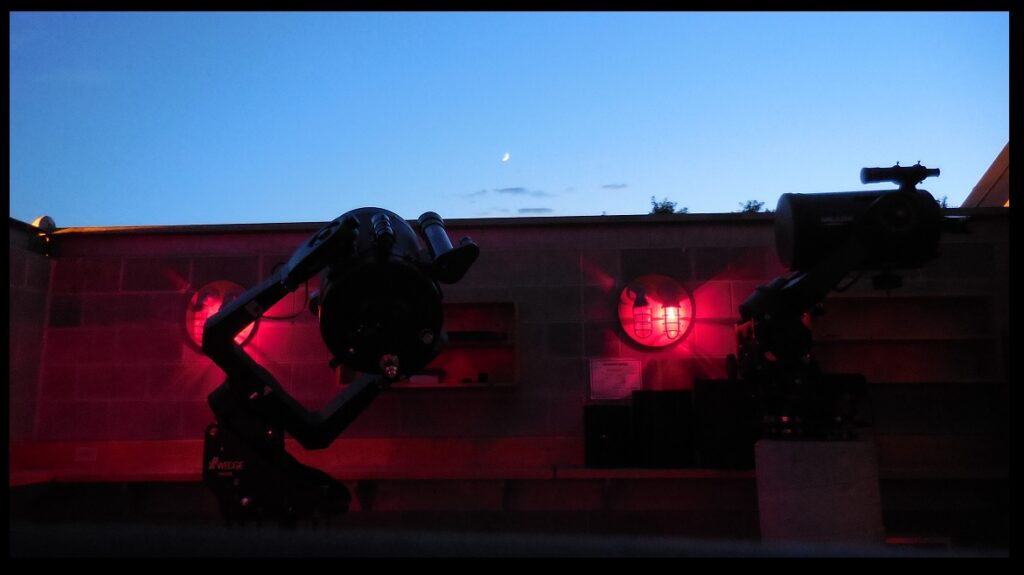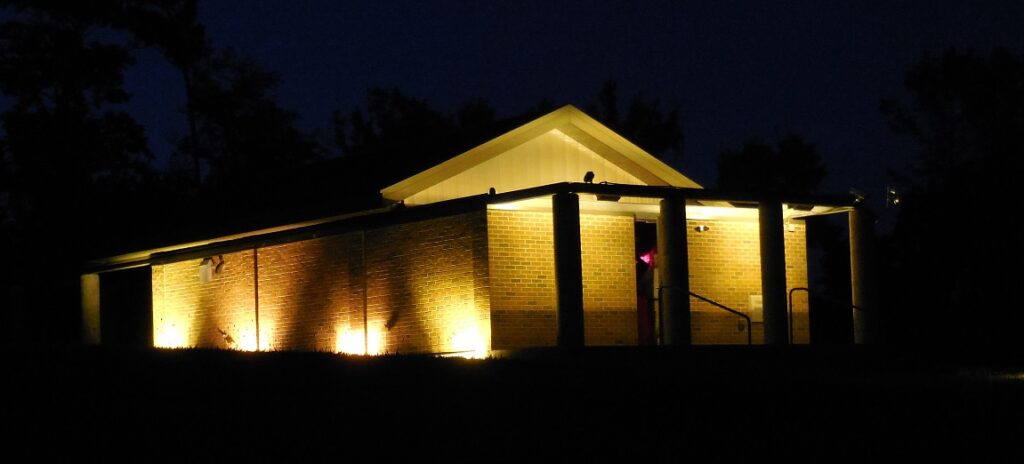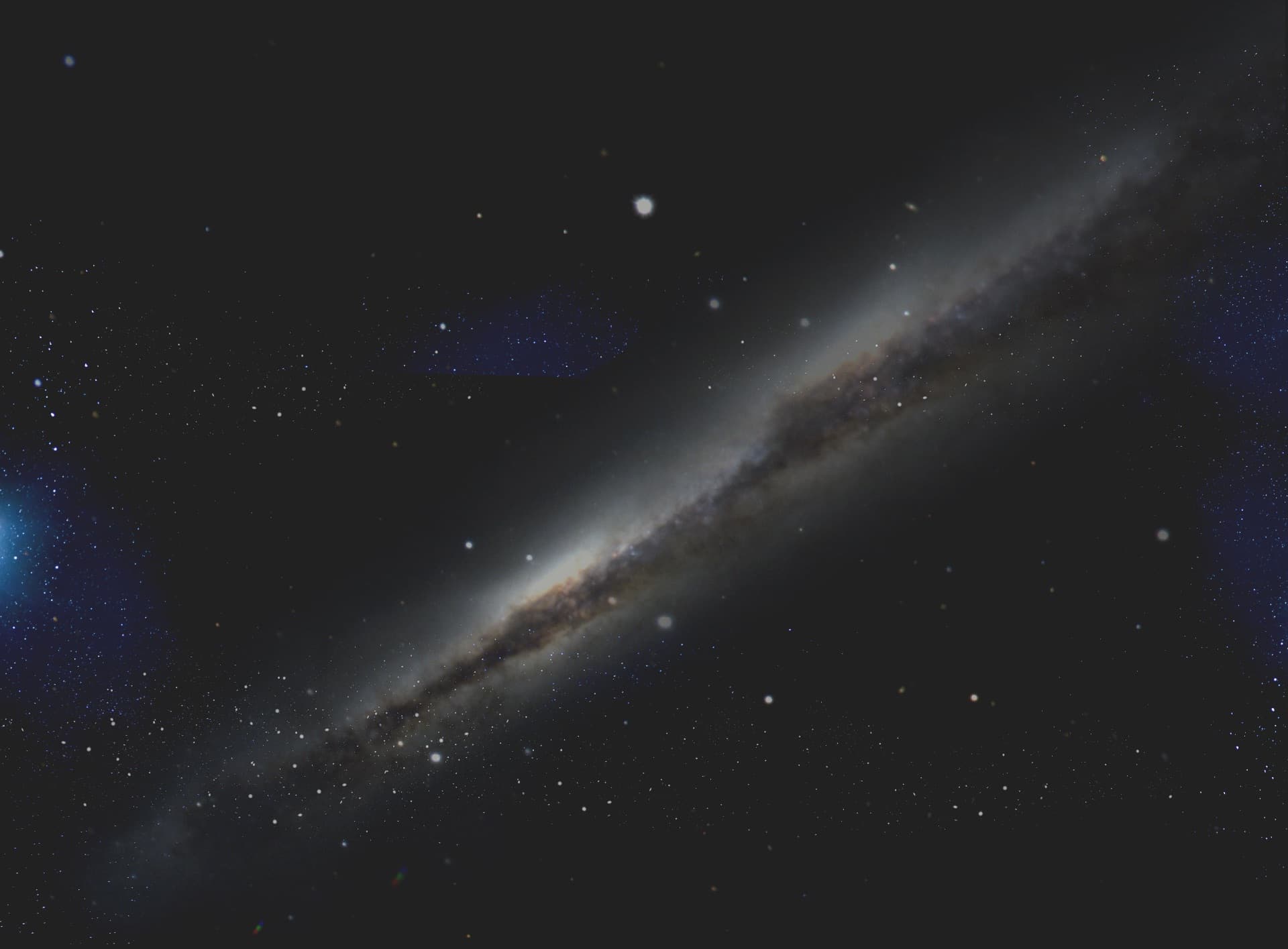Astronomical observatories are great places to visit. It is fun to see the telescopes and the buildings, and to meet the interesting people who run them. Therefore different observatories seem like good topics for any astronomy blog. Since this is “The Catholic Astronomer” blog of the Vatican Observatory, and since the V.O. is run by a Catholic institution, observatories that have that feature in common with the V.O.—sister observatories, in a sense—seem like great subjects for this particular blog.
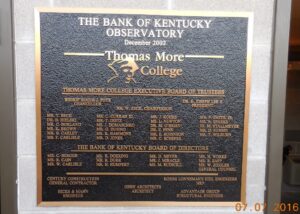 So what astronomical observatories are run by Catholic institutions? The observatory of Thomas More College, for one. The number of colleges with observatories is not large, the number of Catholic colleges with observatories is even smaller, and the number of small Catholic colleges with observatories is really small. Thus Thomas More, a small Catholic college located in Kentucky just south of Cincinnati, Ohio, is a remarkable place.
So what astronomical observatories are run by Catholic institutions? The observatory of Thomas More College, for one. The number of colleges with observatories is not large, the number of Catholic colleges with observatories is even smaller, and the number of small Catholic colleges with observatories is really small. Thus Thomas More, a small Catholic college located in Kentucky just south of Cincinnati, Ohio, is a remarkable place.
And so this summer I paid a visit to Thomas More and its observatory. There I met the observatory’s director, Dr. Wes Ryle, and I also met a student at Thomas More who has used the observatory for research on eclipsing binary stars, Terri Perrino. Perrino is a physics teacher at Notre Dame Academy, a Catholic high school for girls located a few miles from Thomas More. She had been an engineer by training and is at Thomas More for additional education in the less applied areas of science.
The observatory, which is located right on the college’s campus, is a retractable roof structure that was constructed in 2002. It was built to last and it is in good shape—tributes to the college and to Ryle (there are plenty of neglected observatories out there, in large part because to keep one running well requires a person with a very broad set of skills, ranging from a knowledge of astronomy to an ability to work with the public to a willingness to scrub up the mess left by the mice and birds that inevitably get in). Within the observatory are piers for four telescopes, all of the Schmidt-Cassegrain variety. The largest and newest of these has a 14” aperture.
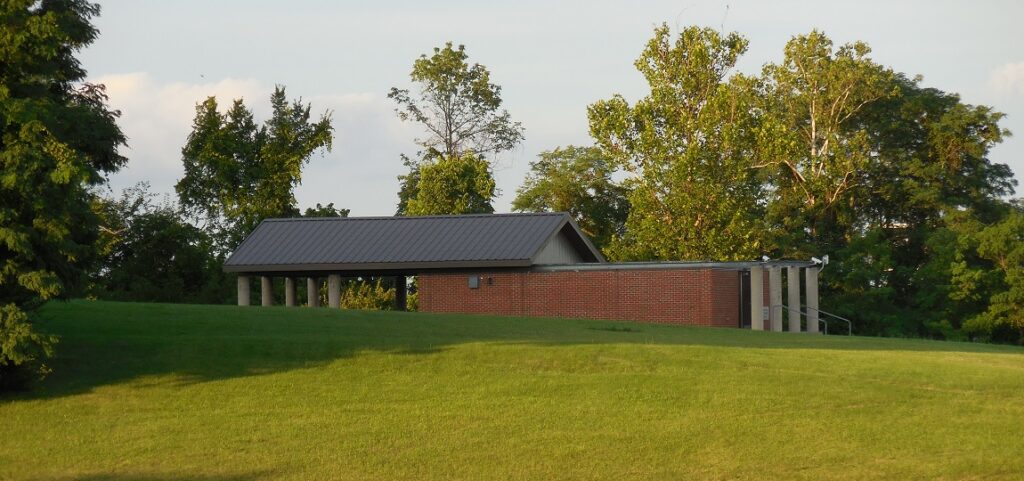 The observatory is located on the campus of Thomas More, away from the main buildings of the college.
The observatory is located on the campus of Thomas More, away from the main buildings of the college.At a small college an observatory will be used for a lot of education and public outreach. Retractable roof observatories are excellent for education and outreach because they make it possible for multiple telescopes to be used simultaneously, and for visitors using the telescopes (or waiting in line to look through a telescope) to see the sky while inside the observatory. This observatory’s on-campus location allows students enrolled in astronomy lecture and lab courses to visit the observatory as part of their classwork. And when the observatory has an outreach program, that location also means that it is easy for members of the public to find it and get to it.
Ryle said that one of his favorite times at the observatory was a recent public viewing of a lunar eclipse. Two hundred fifty people gathered on the hill upon which the observatory stands, with blankets and other paraphernalia, all to watch the heavens. There was a campfire, and s’mores, and people watched a movie projected on an outer wall of the observatory (“Star Wars,” of course). Perrino, on the other hand, spoke of being at the observatory in the late hours to do observations for her research, and hearing owls and the bells of Thomas More’s chapel of Mary, Seat of Wisdom, striking the hour. Perrino recently presented a paper based on the research she has done at Thomas More, entitled “A Parameter Study of Eclipsing Binary Stars HD 166383 and HD 1682071,” at the 2015 meeting of the Kentucky Academy of Science.
Thomas More’s observatory was built through a grant from the National Science Foundation and a donation from The Bank of Kentucky (now acquired by BB&T). The Renaker Foundation has also supported the observatory, providing funds that were recently used to acquire the 14” telescope, and that will be used for further upgrades to the equipment at this remarkable observatory on the campus of a small Catholic college, a sort of sister observatory to the Vatican Observatory.
